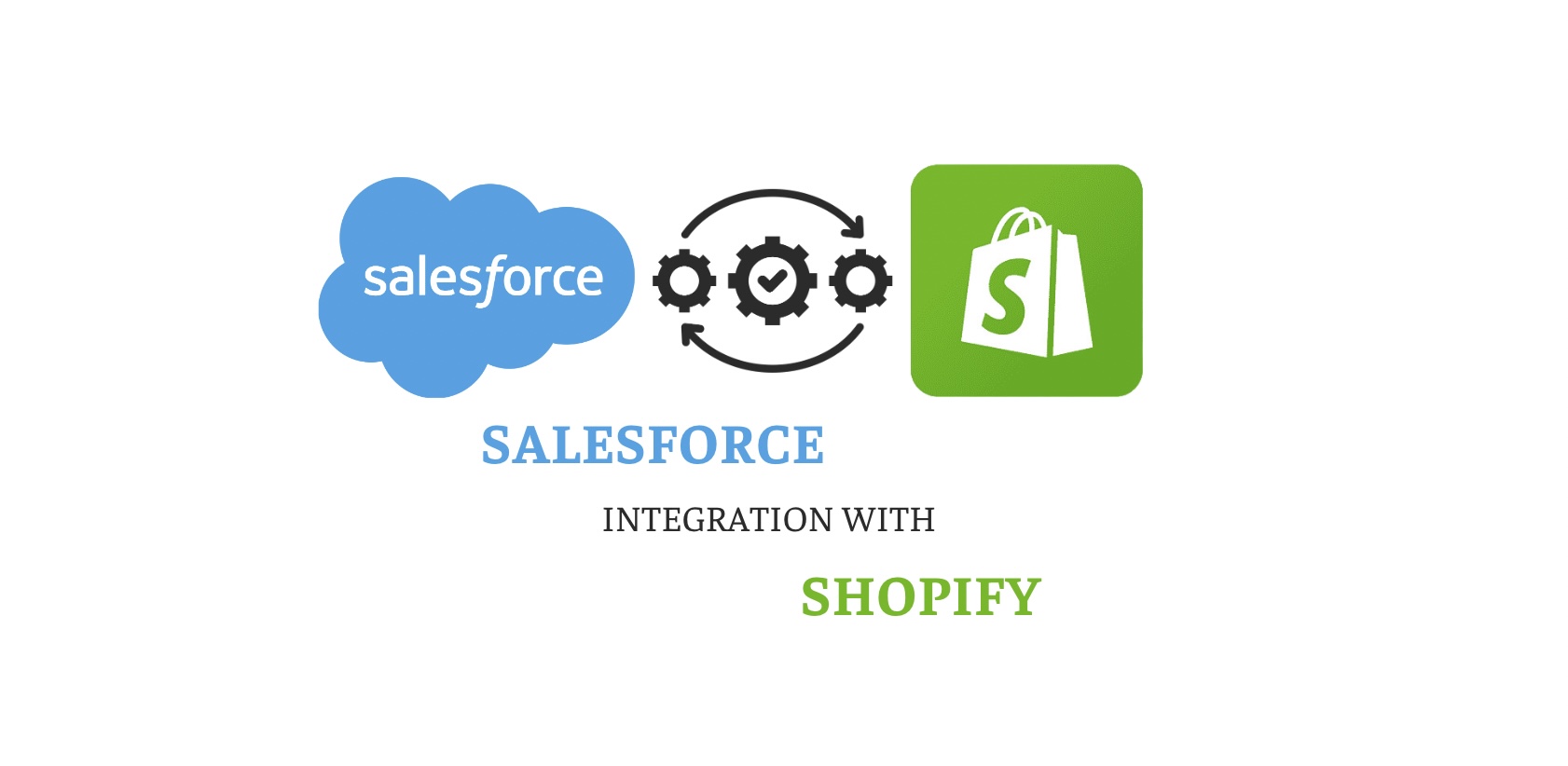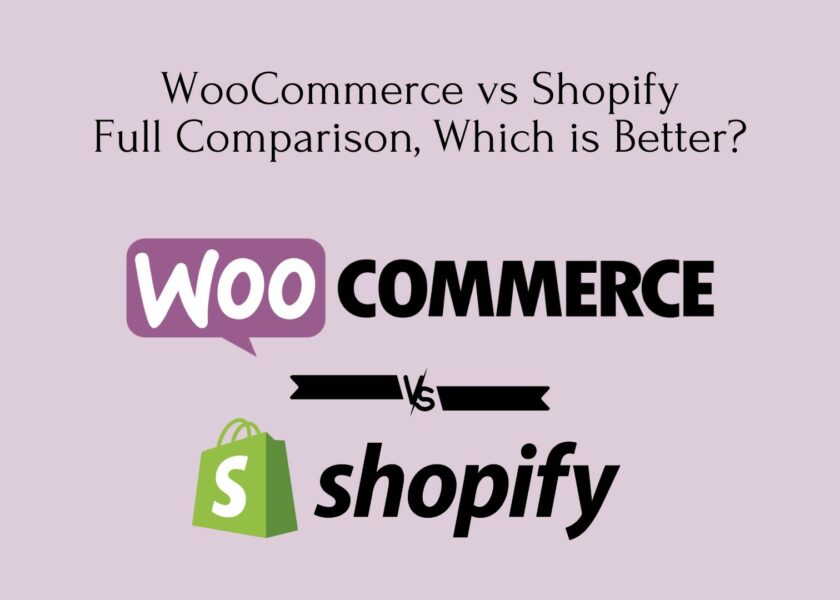Salesforce Shopify Integration: Benefits & Detailed Guide 2024

Salesforce is one of the most powerful and popular CRM (customer relationship management) tools on the market. As a cloud-based platform, it allows teams to centralize information like contacts, deals, invoices and more. More importantly, Salesforce gives you powerful insights into your customer data so you can strengthen relationships and boost sales. That’s why Salesforce Shopify integration is more important.
Now, many eCommerce businesses also rely on Shopify to power their online stores. Where Shopify shines is its seamless management of products, orders and inventory. But wouldn’t it be great if you could link these critical systems to work more cohesively?
That’s where this post comes in. BSS Commerce Shopify will show you how simple it is of the Shopify integration with Salesforce. The cloud solution connects the two platforms with just a few clicks, importing your Shopify customer info directly into Salesforce contacts. Once connected, you’ll gain a 360-degree view of your business plus automated workflows to streamline processes from end to end.
Read on to learn how easy it is to supercharge your operations with a unified Shopify Salesforce integration!
Contents
What Benefits Shopify Salesforce Integration Brings?
1. Improved Marketing Activities
To begin with, the integration helps with marketing activities. With it, you can identify which campaigns are working best. You’ll also be able to track promotional strategies that are increasing brand exposure. Using Salesforce CRM’s tools opens up opportunities to enhance customer engagement in your Shopify store further.
2. Convenient Data Accessibility
Next, integrated platforms give you convenient data accessibility. This means you have valuable customer, order, and product details from both systems at your fingertips in real-time. As a result, you can make quick decisions and stay well-informed.
3. Improved Customer Relations
It also benefits customer relationships. Salesforce CRM’s advanced support capabilities allow you to provide a better experience for shoppers. Over time, you can build stronger loyalty this way as your brand satisfaction improves.
4. Streamlined Operations
Operations see gains as well. Tasks from tracking inventory to generating reports become streamlined. You won’t have to spend time on manual errors either. Internal collaboration is facilitated too – seamless sharing aids decision-making across functions.
5. Safe Accounting and Finance Management
Accounting and finances are easier to manage safely. Teams access optimized sales and payment reports on an ongoing basis. Profits can therefore be maximized to a greater degree.
6. Customer Data in One Place
Your customer view becomes consolidated in one place. Centralizing profiles, communications and transactions in Salesforce CRM provides a single access point for simplified management.
7. Potential for Future Growth
It even sets the stage for potential expansion routes. Connecting multiple platforms opens doors to future scaling using cutting-edge technologies and predictive insights.
In summary, Shopify Salesforce integration delivers cost and time savings. It strengthens customer relationships and unlocks actionable data for intelligent steering into growth phases ahead.
Other CRM systems to be integrated into Shopify to enhance your business: Shopify CRM Systems: Integrate to Grow Your eCommerce Business
Salesforce Shopify Integration: Methods & Guide
When connecting your Shopify store and Salesforce CRM, choosing the right integration method is important. There are multiple ways to establish a seamless sync between the two platforms. By understanding your business needs and the capabilities of each option, you can select the most suitable approach.
#1. Salesforce Shopify Integration with API
Step 1:
- You need to sign up for Shopify and Salesforce developer accounts to access their APIs.
- In Shopify, go to Apps > API and click “View API keys” to get the API key and password. Make a note of these credentials.
Step 2:
- Then use the Shopify REST API to retrieve customer data in JSON format. The endpoint is https://your-shop-name.myshopify.com/admin/api/2021-07/customers.json.
- Use cURL command: curl -X GET “https://API-KEY:PASSWORD@your-shop-name.myshopify.com/admin/api/2021-07/customers.json” -H “Content-Type: application/json“.
- Convert the JSON response to CSV using an online tool like https://json-csv.com or a Node library.
Step 3:
- In Salesforce, create external data source connected to REST API. Set authentication to OAuth and save.
- Generate OAuth tokens by appending your consumer key and secret to Authentication URL like https://login.salesforce.com/services/oauth2/token.
- Using OAuth tokens, query Salesforce Bulk API to retrieve job details endpoint like https://instance.salesforce.com/services/data/v52.0/jobs/.
Step 4:
- Create bulk job XML file with <jobInfo><operation>insert</operation><object>Contact</object></jobInfo>
- Upload bulk job using cURL and OAuth tokens. Save the job ID and batch size from the response header Location.
- Upload CSV batches to job. Check job status after each insert to monitor progress.
#2. Salesforce Shopify Integration Using Native API
- In Shopify, go to Customers section and click on Export.
- Choose ‘Plain CSV‘ file format for export. This will generate a CSV file of customer data.
- Once the CSV file is generated, it will be sent to the registered email from Shopify.
- Download the CSV file containing customer details like name, phone, email, etc from the email.
- Now log into your Salesforce account and search for ‘Data Import Wizard‘ in Quick Find box. Click on Launch Wizard option. Select ‘Accounts and Contacts‘ from Standard object section.

- Choose ‘Match Contact by Email’ action under Import Wizard. Then click on ‘Browse…’ to locate the CSV file downloaded from Shopify. Select the CSV file and click ‘Next‘ to proceed with data import.
- Map the fields in CSV to appropriate Salesforce Contact object fields like First Name, Last Name, Email, etc.
- Fields like Title, Salutation cannot be mapped directly as they are not present in CSV.
- Click ‘Next‘ to schedule the import or start it immediately. It will insert contacts from CSV. The Data Import Wizard can import only 50,000 records at a time in Salesforce.
Note: To import larger datasets, they need to be split into multiple batches of 50K records each. This method lacks real-time syncing between systems and requires manual data export/import.
#3. Third-party integrators for Salesforce Shopify Integration
If you’re looking to connect your Shopify store with Salesforce, several excellent third-party options make integration a breeze. As an eCommerce business owner or manager, being able to sync important data between your CRM and online store is incredibly valuable.
However manual integration through APIs can be quite complex. That’s where integrators like Salesforce Sync, Zapier, and DCKAP come in so handy.
Salesforce Sync
Managing your Shopify store and Salesforce account doesn’t have to be a disjointed process anymore thanks to the Salesforce Sync Integrator. This handy AppExchange tool seamlessly links the two platforms so your important business data like customers, products, orders and inventory is always in sync between them. No more duplicate data entry or risk of information falling through the cracks!

Salesforce Sync is one of the most full-featured tools out there – it provides real-time two-way syncing of things like orders, products, customers, and inventory. You can customize the sync to your exact needs too. The downside is it comes with a pricier $19/month minimum tag.
Once installed, setting up the connection is a breeze. Simply connect your Shopify and Salesforce accounts then map corresponding fields like names, emails, and addresses – you don’t need any coding experience. From then on, any updates made in one system will automatically propagate to the other. Talk about a time-saver!
Best of all, keeping your apps synced through Sync Integrator gives you a unified view of all your customer and sales analytics. Teams can use this centralized data to enhance customer service, personalize marketing, and sharpen their sales forecasts. This integration is a no-brainer if you want to streamline processes from end to end.
Zapier
Then there’s Zapier, which takes the DIY approach by letting you link together triggers and actions through an intuitive interface. No coding required. It’s perfect for setting up simple automated workflows between your apps. The free tier gets you 100 actions monthly to test it out.

With Zapier, tasks like creating contacts in Salesforce from new Shopify customers or adding leads to campaigns from paid orders can be automated with pre-built templates. Setting up “Zaps” as Zapier calls them is simple and requires no coding.
Admins select a trigger event from one app and corresponding action in another to create automated syncing of data. This seamless integration helps streamline processes and ensure information is always up-to-date across an organization’s systems.
DCKAP Integrator
If your budget is higher, DCKAP Integrator is a very effective choice to meet your needs. It gets your Shopify orders and customer info into Salesforce in a readable format. You just get data flowing one direction, but for many smaller businesses that one-way sync is sufficient.

Using DCKAP Integrator, companies can easily join important programs together like ERP, e-commerce and CRM. Popular programs it connects include Epicor, Salesforce, Magento, BigCommerce and Microsoft Dynamics. You can sync data between these apps without writing any code.
Businesses can use preset templates to automatically move information between programs. This integrates a company’s operations and gives customers a unified experience. It helps save time and reduce errors by keeping all info up-to-date everywhere. DCKAP Integrator makes work efficient by eliminating duplicate data entry across multiple isolated systems.
Of course, you have other viable options too like ShipStation for streamlining commerce or Skyvia’s free tier for complex integrations. Do your research to see which third party suits your specific needs best in terms of functionality, ease of use, and pricing. Good integrators save you headaches down the road by keeping your crucial CRM and eCommerce data in sync.
#4. Hire an Expert
If you are not tech-savvy, the idea of getting help from an expert in Shopify is a considerable option. They have the experience and can assist you with the job perfectly. Among many Shopify partners, BSS Commerce Shopify is a notable team with 10+ year in developing eCommerce websites and many customers have chosen its services. You can deal with the Salesforce Shopify Integration quickly with Shopify website development services by BSS Commerce Shopify.
Salesforce Shopify Integration: Common Mistakes
1. Underestimating the scope: It’s not difficult to underestimate the effort required for even a basic integration. Salesforce and Shopify have complex data models and workflows built up over many years, so connecting them takes careful planning and design. I’ve seen well-intentioned projects fall apart simply because the scope was underestimated at the start. Be realistic in your timelines and budget.
2. Not communicating with users: Users are key stakeholders in any integration because the new system workflows will directly impact their daily work. But often user research and feedback is an afterthought. Make sure to talk to your sales teams, marketers, customers, and other users to understand existing pain points and priorities. Their input during development and testing will help catch issues and ensure a smooth transition.
3. Forgetting documentation: As integrations evolve, good documentation is essential. But it’s easy to launch without fully documenting things like data mappings, error handling procedures, or regular maintenance tasks. Make documentation part of your process from day one. Integrations rely on institutional knowledge; documents future-proof that knowledge as team members come and go.
4. Not analyzing metrics: The whole point of connecting systems is to improve business outcomes, right? So don’t launch without a plan to analyze metrics before and after to measure the actual impact. Look at key measures like average order value, conversion rates, or time in the sales pipeline. Over time, these can help justify additional spending and refine your integration strategy.
5. Growing too fast: Resist the urge to take on a massive backlog of new features or multi-year roadmaps. Integrations improve gradually based on real-world usage, testing, and feedback – not grand visions. Small, frequent changes are less risky than infrequent “big bangs”. Stability is key for users adopting new workflows.
Final Thought
In short, Salesforce Shopify integration can boost your business. When these platforms share customer and sales data in real-time, you remove information silos. A unified view provides valuable insights for smarter decisions. Look for an integration partner that requires no coding – simply connect your accounts and map fields. Your teams will gain powerful customer intelligence to streamline operations from start to finish.
Shopify setups to help you manage your store and boost sales:
- Shopify Speed Score
- Shopify Automatic Discounts
- Mastering Shopify Inventory Management
- Best Shopify Review Apps Worth Trying
- Shopify Product Variants
- Pre-Orders on Shopify
- Shopify Countdown Timer
- Shopify Invoice Generator
- Shopify Abandoned Cart Email
- Shopify Gift Card Apps
- Shopify Bundle Apps




